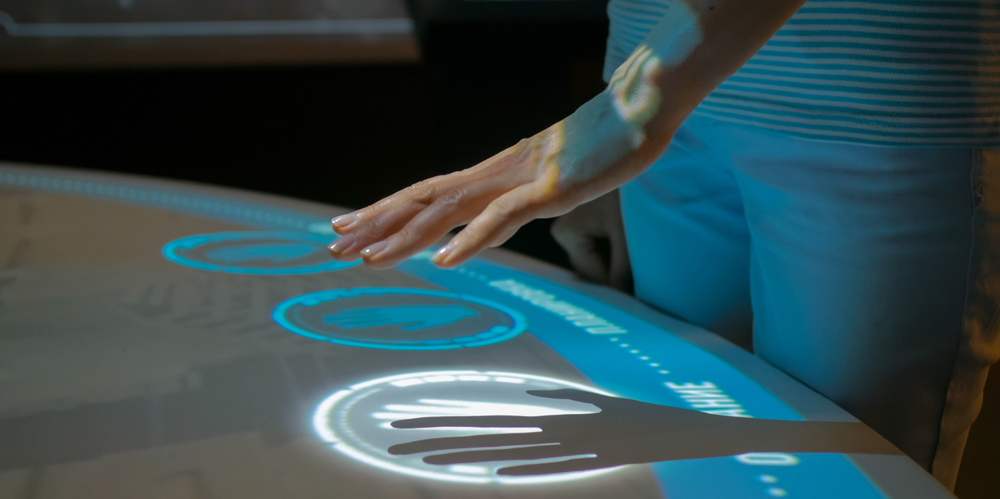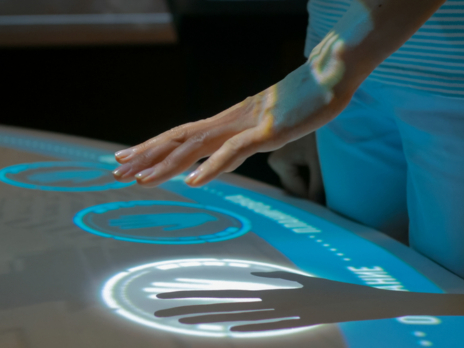
Touchless User Interfaces are a rapidly developing innovation, and the Covid-19 pandemic has highlighted the importance of this particular technology. With a touchless user interface, users can interact with displays without physically touching the surface, significantly reducing the risk of contamination in spaces such as hospital operating theatres and on patient monitoring equipment.
GSR Technology’s new, highly reliable TOUCHLESS User Interface can be used with a standard GSR touch sensor and with no requirement for external electrodes. This technology can be incorporated into both Monitors and Panel PCs. Users can hygienically interact with the technology while retaining the option to touch the surface if needed.
Victoria Smith: What does the TOUCHLESS User Interface offer that touch-type gesturing cannot? What are its primary benefits?
GSR Managing Director Lee Swinton: The primary benefit of a touchless user interface is the creation of a non-touch environment and the reduction in physical contact points. This is a benefit in a variety of applications, whether it be avoiding contamination in a hospital setting, or a food processing plant, or simply a passenger using a self-service check-in at an airport. The current global pandemic has demonstrated the health benefits of having more applications and developing more products that utilise a touchless user interface.
VS: What really sets this product in particular aside from other touchless user interfaces?
LS: Most touchless interfaces need a computer vision or information retrieval (IR) projector-based system combined with artificial intelligence (AI). These systems work well when the user stands a short distance from the system and uses simple gestures to interact. If an operator requires a user interface to operate in a more detailed and focused level in the near-field, without contacting the surface of the screen. This technology will automatically detect the difference between the user hovering and touching, as well as recognising touch and tap gestures to identify the user’s intent. Our solution uses a standard touchscreen sensor, keeping development costs low and the system will also work through thick cover lens designs.
VS: Do you feel as if the Covid-19 pandemic has had an effect on touchless interfaces? How has this affected your company as a whole?
LS: Yes. As a global society, Covid-19 has made people acutely aware of the health benefits of hand hygiene and the risk of infections spreading through the touching of contaminated surfaces. This is already leading to more touch controller manufacturers investing their research and development efforts in touchless user interface solutions.
This will drive technological advancements, that will see improvements in sensitivity, accuracy, and the physical size of the user interface, allowing more and more products to be designed with touchless user interface technology. In terms of our business, GSR is seeing increasing demand from existing and new clients for this touchless technology, both within the medical industry, and other industrial applications.
VS: What makes your company superior to other businesses selling similar products? What can you offer that no one else can?
LS: Flexibility and agility in decision making have always been a key operational strength for GSR Technology. This allows our business to not only understand new technologies that are being developed, but it allows GSR to adapt our strategy quickly to take advantages of these innovations. This is something that our larger competitors find more challenging and can mean they are slower to react to introduce new technologies into their product ranges.
Our close working relationship with the non-touch controller manufacturers, and touch sensor manufacturers means that GSR Technology understands the direction of the technology. This allows GSR as a company to be at the forefront of this relatively new and innovative technology. Our presence as an existing supplier within the key medical and industrial markets means that GSR already has a good understanding of the prospective customer base in which to drive these technological advancements in non-touch user interfaces.
VS: What do you think we can see looking forward with regards to the TOUCHLESS USER Interface? Do you have any future plans to offer an even more advanced version of this technology?
LS: The market for touchless user interfaces has been advancing long before Covid-19, but the current pandemic will accelerate that development. The potential for growth in this area will attract more touch controller manufacturers, and in the short-term, this will mean increased accuracy, sensitivity and enhanced useability.
In the future, there are already advancements in the areas of voice-controlled user interfaces, retinal scanners and palm recognition technologies that all help to reduce physical contact points for many applications and industries. It is certainly an exciting time for touchless user interfaces, and GSR Technology plans to be at the forefront delivering these solutions to our existing and prospective clients.



